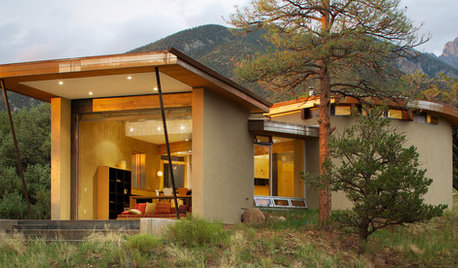Putting Straw or a cover crop in walkway between raised beds
nostalgicfarm
15 years ago
Related Stories

SPRING GARDENINGSummer Crops: How to Grow Strawberries
Pluck your own sweet strawberries right from the garden vine for smoothies, salads or eating then and there
Full Story
EDIBLE GARDENSHow to Grow Your Own Sweet Summer Crops
This guide will help any gardener get started on growing the freshest warm-season veggies and berries for summer
Full Story
EDIBLE GARDENSSummer Crops: How to Grow Tomatoes
Plant tomato seedlings in spring for one of the best tastes of summer, fresh from your backyard
Full Story
FARM YOUR YARDIf You Have Room for Only One Summer Crop ...
Get an edible that’s long on flavor even if you’re short on space, with a long-time gardener’s favorite picks
Full Story
EDIBLE GARDENSSummer Crops: How to Grow Squash
Almost foolproof and with cheerful flowers, squash comes in a wide range of varieties to plant in spring
Full Story
SUMMER FRUITS AND VEGETABLESHow to Grow Your Own Fresh, Sweet Corn
Here's how to plant and care for your own mini cornfield
Full Story
SUMMER FRUITS AND VEGETABLESSummer Crops: How to Grow Beans
Grow your own beans for amazing variety and healthy, convenient produce all summer
Full Story
GREEN BUILDINGWhy You Might Want to Build a House of Straw
Straw bales are cheap, easy to find and DIY-friendly. Get the basics on building with this renewable, ecofriendly material
Full Story
HOUZZ TOURSHouzz Tour: A Straw-Bale Getaway With Sweeping Views
Using passive solar and other green building methods, this Colorado home creates an energy-conscious vacation spot for a family of 5
Full Story
GARDENING AND LANDSCAPINGBuild a Raised Bed to Elevate Your Garden
A bounty of homegrown vegetables is easier than you think with a DIY raised garden bed to house just the right mix of soils
Full Story





greenbean08_gw
west9491
Related Professionals
Cottonwood Landscape Architects & Landscape Designers · Mount Wilson Landscape Architects & Landscape Designers · Pottstown Landscape Contractors · Boca Raton Landscape Contractors · Burien Landscape Contractors · Dixon Landscape Contractors · East Patchogue Landscape Contractors · Forest Hills Landscape Contractors · Framingham Landscape Contractors · Pompton Lakes Landscape Contractors · Maple Grove Decks, Patios & Outdoor Enclosures · Grandview Decks, Patios & Outdoor Enclosures · Harrisburg Decks, Patios & Outdoor Enclosures · Wentzville Decks, Patios & Outdoor Enclosures · Windsor Decks, Patios & Outdoor Enclosuresmarshallz10
kayhh
Kimmsr
peter_6
adirondackgardener
nckvilledudes
paddykevin
kiddo_1
nostalgicfarmOriginal Author
meg_va
bob64
polly_il
polly_il
rdak
Kimmsr
nostalgicfarmOriginal Author
polly_il
bob64
adirondackgardener
greenbean08_gw